The hair shaft is made up of dead, keratinized skin particles. The living structure is the root: it is in it that the cells divide allowing the hair to grow. The health of the curls, their appearance and often their density depend on whether the root receives the necessary nutrition. In human skin, in the root area, there are sebaceous glands: they produce fat. This is a natural lubricant that envelops the scales of the hair shaft, lubricates them so that they do not bristle, do not split, do not break, do not fall flat, are smooth and shiny.
If the hair root receives a sufficient amount of vitamins and the sebaceous glands work smoothly, even long hair will have enough nutrition and will look healthy and beautiful. But if some internal processes are disrupted or external irritants appear, the strands begin to split, break, become lifeless, dry out, become overly electrified, lose shine, elasticity, and sometimes even resemble straw.
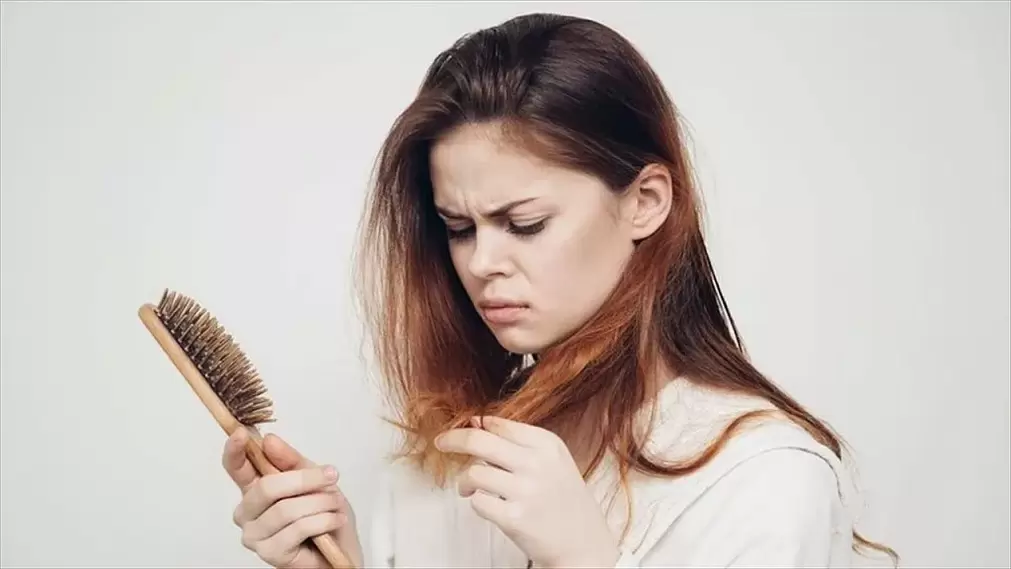
You can restore damaged hair without even delving into the reasons that provoked the negative changes. But if you identify and then eliminate unfavorable factors, you will achieve a long-term effect and a more pronounced result. Otherwise, the situation will soon return, which means you will have to act again.
Causes of hair damage
Externally the hair shaft is protected by a layer of small scales, i. e. the cuticle. These scales fit perfectly together, thanks to which the hair remains smooth and all vitamins, nutrients and moisture are retained inside. Hair is considered damaged if the cuticle is even partially destroyed, for example if some scales are detached, opened or raised. As a result, the flexible spring rod loses the water it needs and becomes less resistant.
In turn, the cuticle is damaged if there is a deficiency of fatty lubricant. It can no longer hold and glue the scales, they fall, the rod remains unprotected, and the moisture contained in it evaporates quickly.
Let's look at the most common reasons that cause a deficiency of greasy lubricant and subsequent damage to the cuticle.
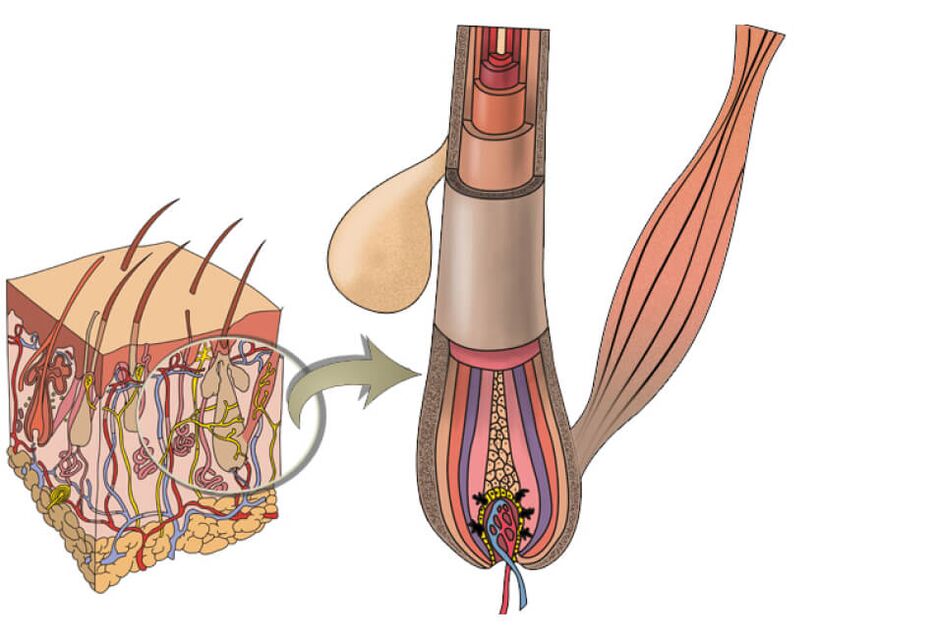
Lack of vitamins and microelements
When the roots receive the vitamins and microelements they need, they supply them to the entire hair shaft. Vitamins also help regulate the functioning of the sebaceous glands, that is, they provide a strong protective film on the cuticle.
All vitamins and microelements are important for health, but if you want to take care of your hair first, check if you have a deficiency of vitamins A, B, C, D, E. Vitamin A (retinol) improves the condition of hair scalpscalp, group B vitamins normalize sebum production, accelerate cell division processes, C (ascorbic acid) and D are beneficial for hair follicles, E helps the body better absorb the listed vitamins. Also check if you have a deficiency of zinc, copper, iron, calcium, selenium, manganese, silicon, phosphorus, as they help hair retain moisture and have a good effect on the condition of the sebaceous glands.
Add to your diet fish oil, beef liver, meat (white, red), fatty fish, carrots, broccoli, herbs, sea buckthorn, peppers, citrus fruits, nuts, beans, buckwheat, oatmeal, eggs, milk, vegetable oils.
Take multivitamin complexes after illness, as well as at the end of winter and spring, when the amount of useful elements in food is reduced. Hair is one of the first structures to suffer from microelement deficiency, since it is more important for the body to nourish the tissues on which life and health directly depend.
Lack of humidity
When the cuticle is damaged, the hair shaft loses the moisture it needs. But the deficiency can occur for other reasons, for example if there is not enough water in the body itself. If you do not drink the prescribed amount per day, this will negatively affect sebum production.
The recommendation is simple: drink about 2 liters of clean water every day - this is a universal amount. And if you want to calculate your personal norm, multiply 30 ml by your weight. Increase the dose if you exercise or sweat a lot. You need to drink water: the body perceives soups and juices as food, and coffee also causes dehydration. If plain water doesn't taste good, add mint, lemon or cucumber. Drink before meals, be sure to drink a glass on an empty stomach as soon as you wake up.
When there is a lack of moisture, the body behaves as if there were a lack of vitamins, that is, it first normalizes the functioning of the most important organs.
Eating harmful foods
The amount of nutrients is minimal in fatty, fried, spicy foods, sandwiches, baked goods, sweet drinks and alcohol. If you eat such foods or drink alcohol, the body will feel full, but will not receive microelements important for functioning. But don't think that you can eat unhealthy foods and drink multivitamin complexes to compensate for vitamin deficiencies. The fact is that these products contain elements that narrow blood vessels, negatively affect hormone levels, increase blood pressure and subject the body to additional stress. Even the supply of vitamins from outside will not be able to neutralize the damage.
Sometimes you can allow yourself to eat something fatty or spicy, but you shouldn't get carried away.
Smoking
Tobacco contains harmful substances in large quantities. It also constricts blood vessels, so the tiny capillaries that feed the hair roots may also stick together completely and the follicles won't get the nutrition they need.
Improper care, aggressive hairdressing procedures
The cuticle can be damaged from the outside, for example, if it is excessively dry, injured or exposed to too high temperatures. They are considered harmful:
- Poor quality cosmetics. Perhaps shampoo, conditioner or other products do not nourish the tissues sufficiently, contain fewer vitamins than your strands need, are not suitable for your hair type and therefore do not solve your problems with curls. It is important not to dry out your hair, but it is also harmful to hydrate it too much. If all the necessary fat comes from the outside, this will disrupt the natural functioning of the sebaceous glands. The solution is simple: choose products that are completely suitable for you.
- Incorrect washing. Don't wash your hair too often - this will only wash away the natural protective layer. Find the optimal frequency to wash your hair.
- Overheat. Curling irons, hot air dryers, straightening irons, curling irons and other thermal devices evaporate moisture from the surface of the hair. For the same reason, it is not recommended to wash your hair with hot water or walk without a hat in the scorching sun. Minimize the use of thermal devices, take a break at least one week a month and apply thermal protection. If you use a hairdryer, choose a cool air setting and direct the wind in the direction of hair growth, i. e. from roots to ends - this smoothes the cuticle.
- Aggressive procedures. Perms, dyes, lightening, bleaching: these procedures destroy the hair structure. For example, the compositions used in coloring lift cuticle scales to eliminate natural pigment. If you cannot refuse aggressive procedures, dye only the regrown ends, use good dyes, and then use intensive therapy designed specifically for colored hair.
- Mechanical damage. You can not comb wet hair, rub it with a towel, use a hard brush, for example metal, constantly use tight rubber bands, hairpins or keep a towel on your head for a long time.
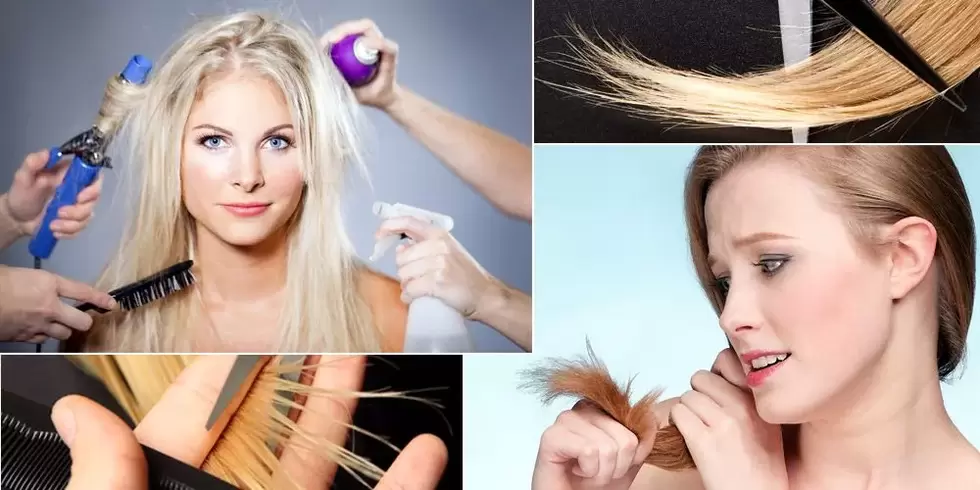
Illnesses
The most serious effects on the condition of the hair and scalp are anemia, hormonal changes, diseases of the digestive and circulatory systems. For example, if a person has pathologies of the gastrointestinal tract, the vitamins and microelements contained in food will not be fully absorbed and will not enter the bloodstream and, therefore, the hair follicles.
Always monitor your health, visit a doctor as needed, have an annual physical examination, and do not develop chronic diseases.
How to restore damaged hair
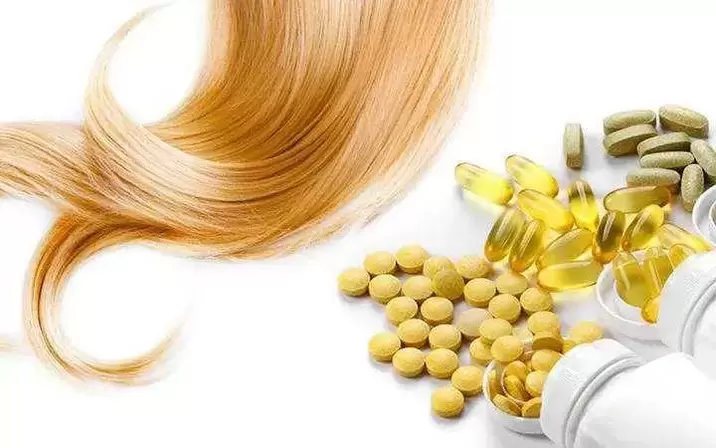
Since the hair shaft is made up of dead cells, it cannot receive nourishment on its own, but is only supplied by the hair follicle. So it is important to take care of your health. It is also necessary to restore the cuticle: if you do not glue the scales together, all the vitamins that come from the root will not be retained inside anyway.
Is it possible to restore hair?
The hair shaft is made up of dead cells, they cannot be resuscitated and their nutrition depends only on the roots. If the hair loses the moisture it needs, it cannot be fully returned. It is believed that damaged strands should be cut and then work only with the hair follicles so that the growing strands are healthy and strong.
But not everyone is ready for a short haircut, so cosmetics come to the rescue. It has several tasks:
- Accelerates hair growth. Even if you are not ready to part with the length, you will cut the ends more often, so you will gradually and completely remove the damaged strands.
- Give vitamins to the roots. The hair that grows back will be healthy.
- Glue the cuticle scales together. This will be a temporary effect: the scales will continue to shed. But if you consistently use good cosmetics, they will consistently stick together.
If you want to quickly get rid of damaged hair, you cannot do without good cosmetics.
What cosmetics should I use?
- Shampoo. Look for products designed to restore damaged curls - this action is usually written on the packaging. It's good if the composition contains oils, glycerin, panthenol. Choose a shampoo based on your hair type and pH level. If you have dry hair, the acidity level of your wash should be less than 5.
- Conditioner conditioner. Do not neglect it, because it is this product that seals raised scales, gives hair softness and helps retain moisture. For dry hair, the pH of the conditioner should be 4 or lower. If the acidity level is not indicated, see what effect the product has. A nourishing conditioner ensures rapid growth of healthy hair, a protective conditioner will help you if you often use heat styling tools and walk in the sun without a hat, a conditioning conditioner will ensure easy combing, which is especially important for long, thick or thin hair anda color protective balm will help preserve the color and therefore reduce the frequency of new stains. Usually conditioners are applied only to the lengths, without affecting the roots, but there are products that act directly on the skin - this is written on the label. Regardless of the effect, it is necessary to leave the conditioner to act for a few minutes and only then rinse it.
- Masks. They cannot fill the follicles and hair shafts with moisture, but they actively nourish them and fill them with useful substances. But do not use masks too often: 2-3 times a week are enough. Otherwise, they will only weigh down the hair, nourish it excessively, interrupting the natural mechanisms of regulation, nutrition and hydration. As a result, an addiction to masks can develop, and in some cases, the opposite effect is even possible: products that are supposed to moisturize will eventually start to dry out the hair. And apply masks correctly: anti-hair loss products are applied mainly to the scalp, and cosmetic masks are applied along the entire length, 5-10 cm from the roots.
- Lotions, oils. Such products do not need to be washed off, so they continuously act on the hair and restore them well. Oils and lotions are applied to dry or wet damaged ends after each hair wash and effectively combat the delamination of cuticle cells, that is, they help restore the hair structure. Many products have a cumulative effect, which increases if you use cosmetics constantly. But make sure the oils don't weigh down your hair; Don't apply too much, otherwise your locks will look greasy.
It's good if you use all the products, not just one, and it's even better if you choose cosmetics from one line. Most often, such products enhance each other's effects, so you will get the desired result faster than if you use only one thing.
Home remedies
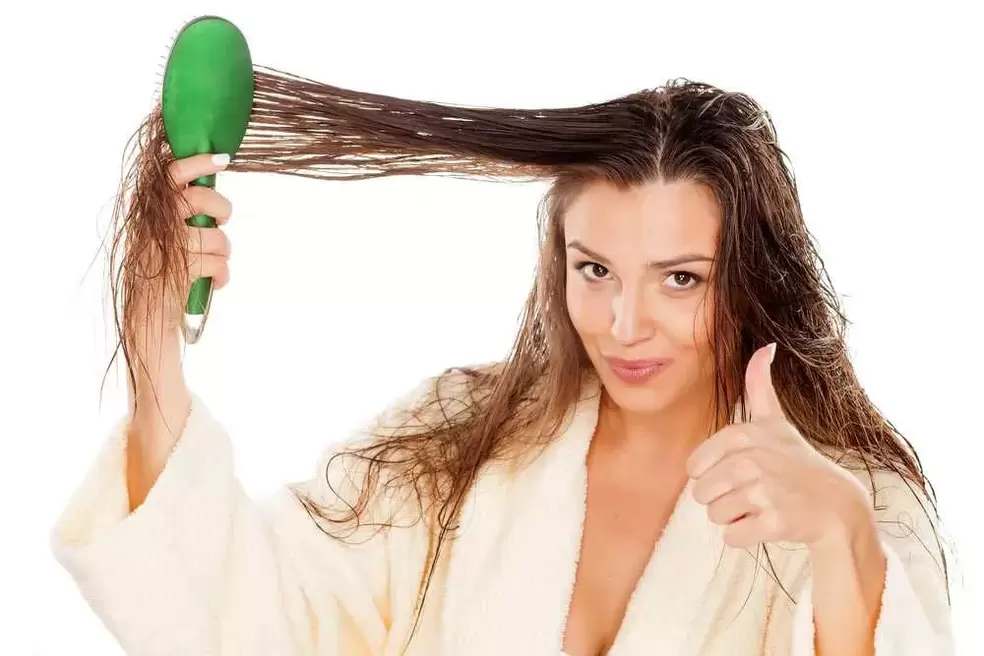
The best effect is provided by proven professional products sold in pharmacies and specialized stores. But their effect can be supplemented with the help of folk masks: eggs, honey, fruit, yogurt, kefir, henna.
Herbal decoctions have proven themselves well, especially from nettle, burdock root, hop cones, burdock, dandelion, chamomile, birch leaves, string, sage, calendula, St. John's wort, lemon balm, linden flowers. Use them after washing your hair or even every day. Prepare decoctions immediately before use, do not store them, as the beneficial substances contained in them are quickly destroyed.












